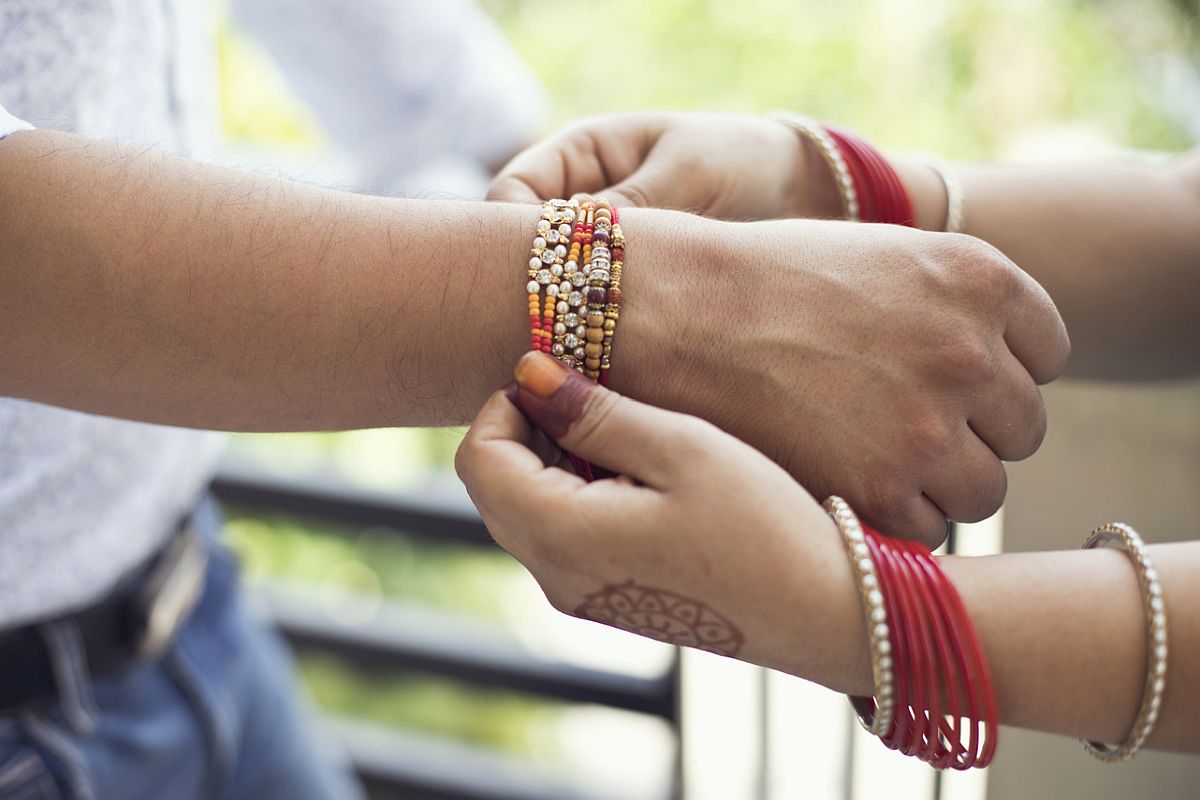China Retirement
China's move to raise the retirement age, the first adjustment since the 1950s, is a critical response to an escalating demographic and economic crisis.
The ‘safety pin’ movement was possibly inspired by the 2014 ‘#illridewithyou’ movement in Sydney, amid the fear of an Islamophobic backlash after a terrorist attack, where, as a symbol, people offered to sit next to Muslims who felt threatened on their commutes.

(Representational image: iStock)
Is Rakhi just a simple piece of coloured thread, blended with love and a promise to care and support one another? Certainly, Rakhi is widely practiced and publicised as a symbol of bonding between a sister and her brother. The Rakhi economy is also huge in this part of the world. According to the Confederation of All India Traders, trade of an estimated ?6,000 crore takes place every year in India on Raksha Bandhan.
However, that might have been seriously affected by the Covid-19 pandemic this year. And an attempt towards a purely Hindustani Rakhi festival this year might have changed the dynamics as well as it might have dented China’s estimated ?4,000 crore trade during the festival. However, Rakhi might have immense hidden potential which was unleashed by Rabindranath Tagore. While the usage of Rakhi is inscribed within our mythology and even within ancient and medieval history, Tagore gave an all-new interpretation of Raksha Bandhan, at least in Bengal during the turbulent period of ‘Banga Bhanga’ (partition of Bengal) in 1905.
Advertisement
He deftly used the concept of brotherhood, togetherness, and ‘the thread of protection’ as a medium to protest British’s partition policy. Tagore thus transformed a socio-religious tradition to a secular motif of unity among diversity. Although Rakhi was exhibited to have the potential to act as an instrument of solidarity and communal harmony more than a century ago, it was possibly much under-used thereafter, due to some unknown reasons.
Advertisement
Subsequently, Tagore, however, might have expanded the domain quite a bit – he envisaged Rakhi as a symbol of solidarity in ‘love’ also. His popular song ‘Sedin dujone’, composed 22 years after the partition of Bengal, even talks about tying Rakhi to ‘life’ (‘heart’?) of a lover! When the George Floyd incident triggered massive protests and saw a resurgence of the ‘Black Lives Matter’ uprising across the United States and internationally this May and June, many white people in the US and other Western countries also supported the movement.
I was wondering that it was possibly a perfect opportunity for a ‘Rakhi-moment’ following Tagore’s 115-year-old spirit, indeed! However, Rakhi is an Indian festival which could not break geographical boundaries. But, interestingly, a few years ago, the West found an almost parallel to Rakhi through the ‘safety pin’. The ‘safety pin’ movement was possibly inspired by the 2014 ‘#illridewithyou’ movement in Sydney, amid the fear of an Islamophobic backlash after a terrorist attack, where, as a symbol, people offered to sit next to Muslims who felt threatened on their commutes.
Subsequently, of course, safety pins worn visibly on clothing became a symbol of solidarity with victims of racist and xenophobic speech and violence. Following the Brexit referendum in June 2016, when Britons voted to leave the European Union, there was a 57 per cent increase in alleged cases of hate crimes in the UK, mostly against immigrants and refugees. Certainly, many Britons wanted to show solidarity, support, and offer safety to one another during such an unprecedented social crisis.
During that period, an American woman named Allison living in Britain at the time popularised the idea of wearing a safety pin visibly on the clothing through her social media post. And a symbol as simple as a ‘safety pin’ became an important first step in showing solidarity and support for people who were scared and upset at that time. A ‘#safetypin’ hashtag began trending, and many people posted selfies on social media after wearing safety pins on their clothes.
The idea then crossed the Atlantic very quickly. Just after a few months, in the wake of Donald Trump’s victory in the 2016 presidential election, alleged cases of abuse against minorities were reported in many US cities such as New York, Miami, Los Angeles. And safety pins again became a symbol of solidarity with victims of racist, religious or homophobic abuse in the US.
This leads me to wonder whether, in this era of internet and social media and also social distancing, a picture of a Rakhi posted on social media from sensible people could become a symbol of solidarity during, for example, a riot? Can that trigger a sense of support or safety as a first step? However, only a gesture might not be enough. For example, wearing a safety pin visibly on the cloth or posting such a photo on social media might be too small an effort towards solidarity.
Some commentators and activists have even ridiculed it as ‘slacktivism’ – the practice of supporting a political or social cause by means such as social media or online petitions, characterized as involving very little effort or commitment, while others have argued it is useful when connected with other, more concrete political actions. Certainly, a safety pin could have immense promise as a symbol of solidarity during such crises – as the Rakhi can – especially in this age.
While it worked three years ago, the safety pin appears to have lost momentum. For example, I expected widespread use of safety pins as symbols of solidarity, in the US during the period following the death of George Floyd. However, it did not happen this time around. Did the American people overlook the innocent charm of such a gesture? In the same way, Rakhi is not widely used in our country in the way Tagore envisaged it at the time Bengal was partitioned. A lot of hidden potential – beyond popular uses – may have remained unused.
(The writer is Professor of Statistics, Indian Statistical Institute, Kolkata)
Advertisement